Patuxent Research Refuge: North Tract
June 11th, 2009Last weekend, a friend and I visited the North Tract of the Patuxent Research Refuge, a 12,841 acres area which was formerly a military training ground, and has now been returned to nature. While collecting is not permitted in this park, it was still very interesting to hike around the various bodies of water to see what aquatic plants were present.
The first lake we visited had cattails on one side of it, and lillies on the other. The cattail side also had a number of other aquatic plants present including (but not limited to) Ludwigia palustrus, Hydrilla, Callitriche sp., and some aquatic grass shown below that we’re not entirely sure what it was.
In other areas, spatterdock was present throughout. It was very interesting to see which areas had a variety of plants, and which were pretty much dominated by a single species.
Not being limited to interesting aquatic plants, while walking along one of the roads, we came across a series of stands of Pricklypear (Opuntia humifusa) which were in full bloom, exhibiting beautiful yellow flowers. I believe this is the first time that I’ve seen this plant in Maryland, so I very much enjoyed checking it out. I guess cacti are not limited to southern hot zones!
In addition to the lakes, a series of streams run through the property. Most of them are shaded, and so there’s little chance for aquatic plants to grow, but they’re beautiful nevertheless.
Across the street from that stream happened to be a large boggy area. We pulled over to have a look, and sure enough, we found sphagnum moss, but little else besides the grasses shown below.
There were a few lillies there, but it seemed to mostly be a dead-zone in terms of the aquatic plants we were interested in. Throughout the course of our trip, we noticed a lot of beaver activity, evident from the saw off tree trunks, but we never did see any beavers.
In contrast to some of the lakes, which were dominated by lillies, the marsh areas were covered in Brasenia schreberi. In amongst the Brasenia there were several other plants.
Many Utricularia flowers were present, most likely being U. geminiscapa, but that’s just our best guess. Some of the Brasenia was also flowering, showing smallish red flowers.
At our last stop, we found a field of Proserpinaca palustris, most of which was growing in its emersed form, even though it was submersed. This is likely due to recent rainfall that inundated the plants when the water levels rose. Further down the stems you could clearly see the fine-toothed-pinnate leaves that are so typical of Proserpinaca.
To any other folks exploring nature in this region, please be sure to use proper tick prevention, as they’re out, and Lyme is prevalent throughout the area. So, while not a collecting trip, it was a great day to be out and about exploring our native Maryland habitats.

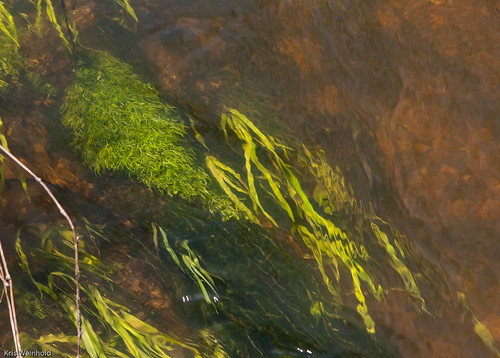
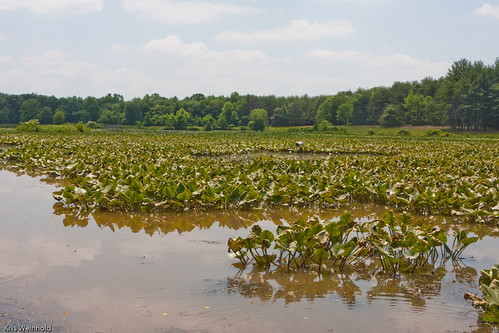
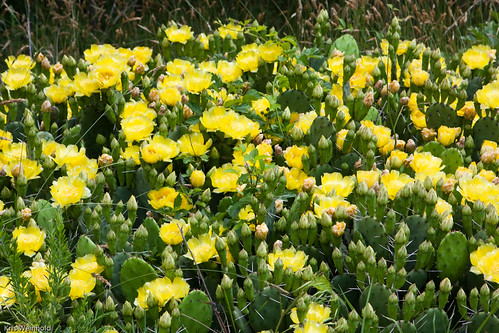
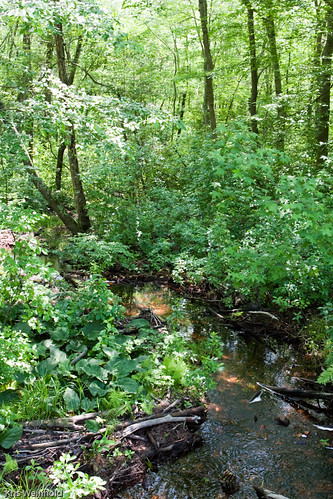
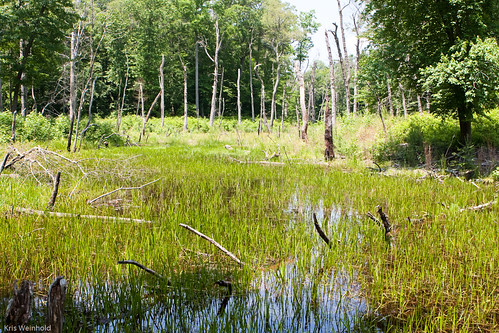
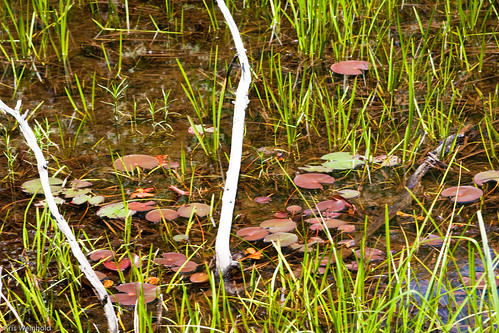

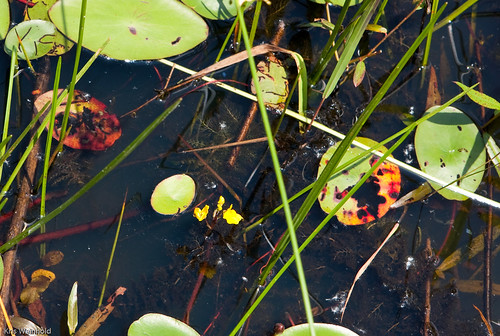
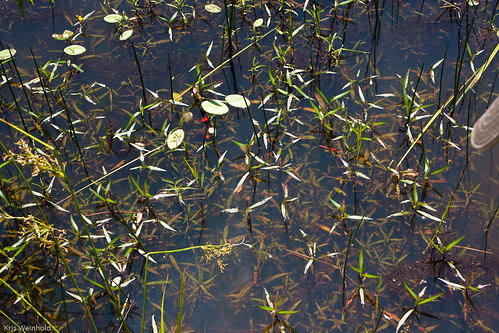
June 16th, 2009 at 12:03 pm
Kris – did you ever get an ID on those aquatic grasses in the second pic of this post? Just curious.
I’ve also got an update for you on the Ludwigia sp. growing in a creek in my neighborhood: it is now the dominant aquatic plant in the creek, growing from one shore to another – it emerses in the middle of the creek, where the water is deeper, but stays submerged in shallower water closer to shore … I’m guessing this may be an adaptation for optimizing photosynthesis – maybe it doesn’t need to emerse in shallower water because sun light penetrates better there? The only problem with this theory of mine is that the shore is also shaded by emersed bog plants such as pickerel and iris, as well as shore-hugging trees such as box elder and willow.
The emersed (Ludwigia) plants have become a deep burgundy hue, which usually extends for at least a couple of inches below the water surface, fading to rusty green; the fully-submerged plants are bright green, sometimes with a slight golden hue. I’m wondering if any of this info effects your guess on the exact species?
Cheers,
Mark
June 16th, 2009 at 5:14 pm
Mark, best guess is Sparganium americanum. I doubt it would be viable longterm in the aquarium.
Mark, without pictures, the most prevalent Ludwigia in our area is Ludwigia palustris. If I had to guess, that’d be it. It’s well-worth trying, is it’s a lovely aquarium plant, and yes, it’s everywhere!